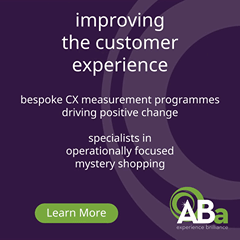Q&A: Leila Van-Herbert of Worldline
Here we talk to Leila Van-Herbert, Sales Team Lead (Speciality Retail GSV) at Worldline about her role, live shopping and what’s next in payments.
Leila, what is your background?
My background is in the fintech payment industry with retail and hospitality sector expertise. I have been in the payments industry for just over a decade and have worked across multiple verticals for both established and earlier stage growth businesses including: Verifone, Apexx Global, Ingenico and Modulr. I joined Worldline in 2021 following their acquisition of Ingenico and I am responsible for the sales team for the speciality retail portfolio in the U.K.
What does Worldline do?
At a time of increasing consolidation in our industry, this acquisition of Ingenico has positioned Worldline as the fourth largest player in payment services worldwide, with 20,000+ employees and a physical presence in more than 50 countries. Through our merchant services offering, Worldline provides market leading omnichannel solution capabilities to enable seamless shopping experiences for our customers which are in addition to acquiring services.
We also provide additional value-added services through third party partners which works well because we’re platform agnostic. We partner with BNPL services, charity partners and customer feedback providers. Through Worldline’s continued innovation and roadmap strategy, additional value -added services and partners are being continually added to our service offering to ensure consumers are able to pay in the most convenient and frictionless way.
What is live shopping?
Live shopping is the buying and selling of products or services directly through live streaming videos. It creates a new avenue for brands to engage with their customers and drive sales effectively, as it empowers brands with innovative ways of storytelling, bringing consumers a different shopping experience. Typically, consumers are able to complete their purchase seamlessly in the video through shoppable links. There are multiple ways brands can launch a live shopping event, on social platforms like Instagram, TikTok, on marketplace like Amazon, or on their own webstore.
How are retailers using live shopping?
Live shopping began in China, quickly moved to the US and is now making its mark in Europe. It is a very interesting concept; effectively it is capturing the sale of goods, services, and products during a live streaming event broadcast run by retailers. Retailers are seeing a lot of traction with live shopping:
- In China in 2020 live shopping gross merchandise value topped $171 billion, up from $22 billion in 2018 and currently 50% of Chinese consumers shop via live video today. Two thirds of consumers have shopped via livestream
- that consumers engaging with a live shopping solution have an average sales (basket) conversion of 17% (to as high as 30%) during the live shopping events (the average conversion of ecommerce transactions is 1~2%) .
- Nearly half (49%) of online shoppers say they would buy products directly from live videos where brands, celebrities, or influencers they follow are launching new products.
What is the competitive advantage?
Live shopping has allowed retailers to ‘enter’ customers’ homes and break down the barrier between a retailer’s website or physical events, creating a frictionless and authentic retail experience. It’s blurring the lines of traditional commerce and traditional bricks and mortar businesses.
It offers the retailer the opportunity to really capture customer interest at the point of interaction. It also provides them with meaningful data – they can know in real-time what piqued customers interest, levels of engagement and how many people went on to buy the product. The data can then be used the shape future events and product development and optimise distribution channels.
Live shopping is also a very symbiotic tool as consumers get to connect directly with the brand and enjoy the involved experience, while the retailer improves customer engagement, increases order value and improves customer insight.
How do payments fit into live shopping?
Worldline will capture the payment and transaction that will link up between the customer and the retailer. Together with our partner Livescale, we are offering a live shopping solution with an integrated checkout feature – consumers can complete the their purchase without having to leave the video experience once.
For our business, flexibility is key. Our services are modular so our customers can easily add additional options such as social selling to their existing architecture- effectively choosing the elements of payment options they may need at a given point in time.
As part of our innovation program, there’s a huge amount of interest in payment activities in the pipeline, and for us, it’s to capture them and bring them to market very quickly in order to make it easy for retailers to deploy these services as quickly as they can.
What is one of the biggest challenges for retailers in the year ahead?
Retail supply chains have been seriously disrupted as we know for several reasons, and therefore for the year ahead, stock management and fulfilment are going to be a big challenge for retailers.
We’ve seen it already in the UK in January with lower retail sales for some brands because they just couldn’t fulfil stock for electrical goods, high ticket items, garden furniture and even some grocery items. It’s a challenge and now we’re seeing stock disruption leading to price inflation.
The disruptions will force retail supply-chain leaders to take action to manage volatility and ensure product is available to meet consumer demand.
How can retailers mitigate this challenge?
To address disruption across the supply chain and carefully manage stock and fulfilment, retail leaders will have to rethink traditional approaches.
They must understand where their products are so they can continue to serve customers and keep them happy. Retailers need to see the ‘full picture’; a single view of their customer, their journey and all stock and sale levels. They need to be able to ensure that every element of the customer journey that they can control is as robust as it can be. And for the areas outside of their control, they need to think, where can we innovate? From a payment’s perspective, could they be offering deferred payment terms or recurring payments and not invoicing until the goods, particularly for considered larger purchases.














